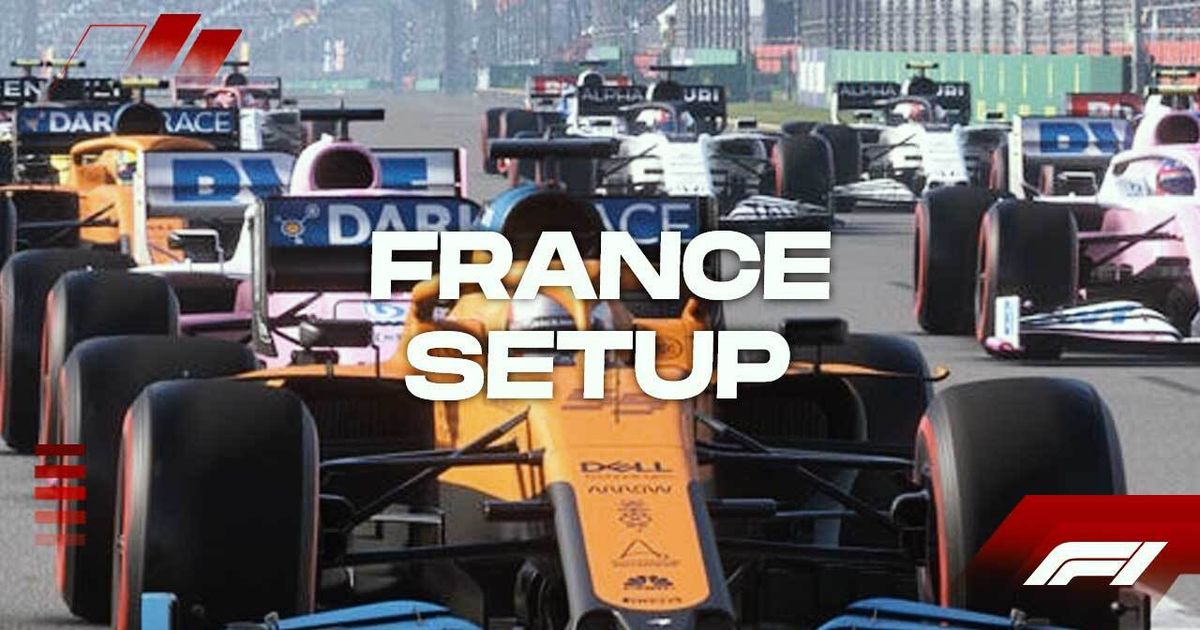F1 2020 is now out worldwide and has wowed both fans and critics. We've reviewed this year's official Formula 1 game and we love it too!
The French GP made a comeback in 2018 at Circuit Paul Ricard. While the event has been cancelled in 2020, you can play the race in F1 2020.
Setups are difficult to ace thanks to the circuit's long straights and long corners which demand a lot of downforce.
Table of Contents
But don't worry, we're here to help! Our setup guide for the French GP gives you the best opportunity to reach the top step of the podium in My Team and Career Mode.
Aerodynamics
The aerodynamics are arguably the toughest part of the car to setup in France. There are three very long straights here and more points where you'll be hitting 200 mph (320 kph).
READ MORE: F1 2020: ALL CARS
5 front and rear wing angles is the lowest you can go and still be quick through the corners. The setting will also allow you to be fast in a straight line, even without DRS.
Transmission
Transmission sets how your traction will be, you've got to perfect this to be quick. An open differential makes traction more gradual but reduces it overall.
There aren't many difficult traction zones in France. Aside from Turns 6, 9 and 15, you won't be struggling to control the rear end on-throttle.
READ MORE: F1 to race at Mugello but will it be in F1 2020?
We opted for 90% off-throttle diff and 75% on-throttle. 90% is the highest you can go for off-throttle, as the car will be unstable through the high-speed corners of Turns 1 & 2 and Turn 11.
Suspension Geometry
Tyre wear isn't usually an issue in France but if you're conservative enough, you can do a 1-stop race here. Doing one less pit-stop than the competition saves heaps of time, as the pit-lane is one of the longest on the calendar.
The higher the camber and the lower the toe the faster the car will generally be. This is because more of the wheel's surface will be in contact with the tarmac.
READ MORE: F1 2020: Australian GP Setup Guide
We opted for the front camber to be -2.70, with the rear set at -1.20. The toe angles need be relatively low at 0.08 on the front and 0.29 on the rear.
You can alter these values if you're able to better save your tyres throughout the race.
Suspension
Suspension settings determine how your car will mechanically handle through corners and over the kerbs.
The kerbs aren't harsh in Paul Ricard, they're very smooth by F1 standards. However, you'll need softer springs than usual here, due to the sheer speed you'll be rounding these corners.
We opted for 3 on both the front and the rear axles, any higher and you could end up spinning at Turn 10.
READ MORE: F1 2020: Austrian GP Setup Guide
The anti-roll bars are therefore very stiff to compensate. 10 on the front and 9 on the rear is as low as you can get away with without compromising stability.
READ MORE: F1 2020: Hungarian GP Setup
Finally, the ride height needs to be low in order to aid straight-line acceleration. We opted for 3 on both the front and rear but you could go lower than this thanks to Paul Ricard being as flat as a pancake.
Brakes
Brake aren't as crucial in Spain as they are for other races, but you need to get this right to be able to overtake.
Thanks to the long straights, there are some big stops in France. Lockups aren't usually an issue, so you'll need to go high on the brake pressure. 89% pressure is an appropriate value, but you can still be competitive with 85%.
The front brake bias should be set to 53% to prevent front lockups. Again, if you're locking the tyres, change this value to accommodate.
Tyres
The only change to setups in F1 2020 is that you can now set the tyre pressures for each individual tyre.
The tyre pressures need to be around middle of the park to get the bite you need to be fast.
Set both of the front axle's tyres to 23.4 psi, slightly higher than most circuits but this helps compensate for cooldown down the straights.
READ MORE: F1 2020: Chinese GP Setup Guide
To help the rears out of the traction zones, 21.5 psi on the left and right is ideal. Like mentioned previously, traction and wheelspin isn't usually an issue here, so you could go even higher than this.
Explore new topics and discover content that's right for you!




